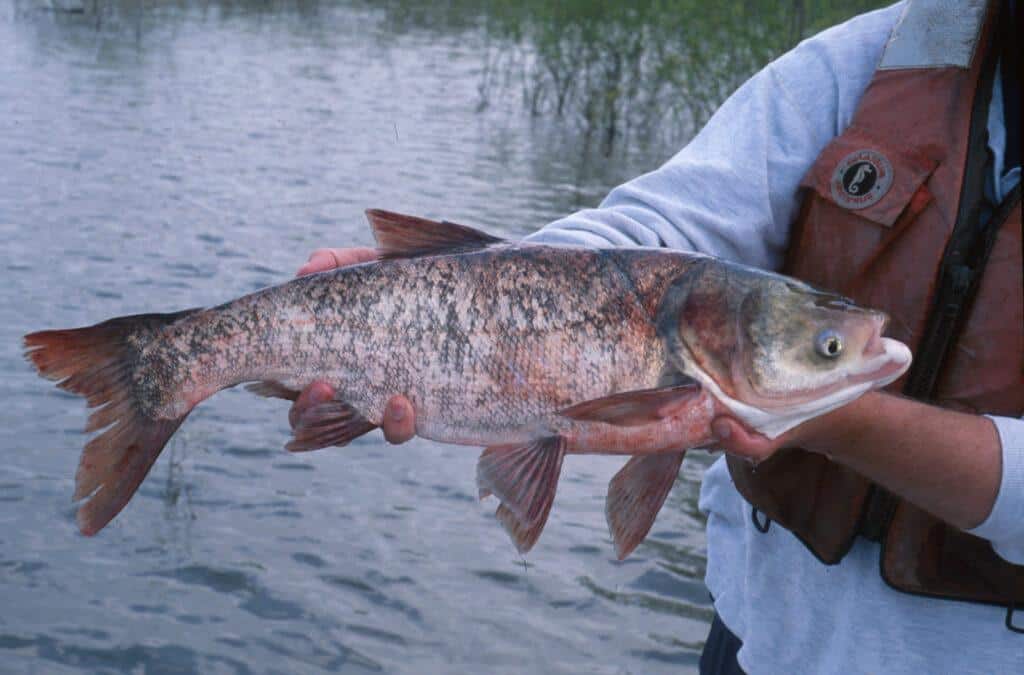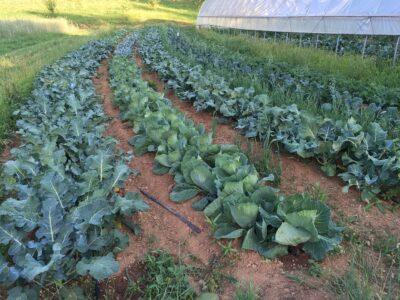One of the most abundant freshwater fish today is the Asian carp. Depending on your region of the country, you might know these fish under a host of different names. They are generally some of the heaviest fish in the river, and they often sport a population that is larger than any other fish in the area. Whatever you call them. though, the point is the same: There are a lot of them and they are huge!
They eat nearly everything and can be found in nearly all waterways including lakes, rivers and ponds the world over.
So why isn’t there much praise for this versatile fish? Well, for one, they are extremely invasive. Their tendency to survive and even thrive in most conditions puts a real strain on native fish populations and the environment. Another strike against carp is that they are commonly known for being a “garbage fish” with little value as a viable food source. Yes, it is true that carp are one of the most widely eaten fish in the world, but that seems not to be the case in the United States. Many people attribute carp with having a muddy or unpleasant taste due to their tendency to feed from the bottom of rivers and lakes. Carp also have a very distinct blood line that runs through their body, which can add to the unpleasant taste if not removed. Additionally, carp tend to deteriorate clear and fertile lakes upon their arrival, according to the U.S. Commission of Fish and Fisheries.
So what good can be found in fishing for carp? There are a number of recipes aimed at making carp taste better, with just as many techniques for purging the fish of their muddy flavor. Many cultures will pickle carp meat or smoke filets as a means of preservation. The thing to keep in mind is that carp are such a readily abundant natural resource that anyone who is keen to utilize survivalist skills cannot ignore their potential.
Eating Carp
A simple recipe for smoked carp is to first filet the fish and then to soak each filet in salted water for 24 hours. You should use anywhere from 1 1/2 to 2 cups of salt per gallon of water. After 24 hours, remove the fish from the brine and sprinkle a little brown sugar on each filet. After that, place them in your smoker at 150 degrees Fahrenheit and smoke them for 6-8 hours.
This New All-Natural Fertilizer Doubles Garden Production!
Each of these methods can provide a lot of versatility in taste preferences and give people an opportunity to bolster survival food stockpiles. And yet there is still another use for these abundant fish. Carp make for one of the best additions to your garden, whether you use the entire fish or just the remains.
Carp in Your Garden
This lesson is one that was passed down to me from my grandparents decades ago. I have seen this done and can testify to its potential benefit. The fundamentals behind this concept are simple. Catch the fish, process what you can, and bury the remainder in your garden. (You can honestly use the scraps from any fish you may have – but you will want to eat other fish.) What we always did was to build a weekend out of carp fishing and then process and bury our fish in the garden.
I do not come from a family that was big on eating these fish. In fact, in all the years I was a part of this process, I never saw one person even attempt to eat a carp. The only processing we did in regards to carp was to wrap each fish in newspaper, toss it in a hole, and give it a rough chop with a shovel just before burying it. This gave the carp more surface area to break down and sped up the process greatly. This task was generally done after plants had been harvested or in sections of the garden that were not in use at that time.
The key I learned was that you needed to dig a hole that was at least a foot deep in order to avoid any unwanted guests from digging up your catch. Once the fish were in the ground, all that was needed was time. The fish were generally broken down within a few weeks and never smelled at all. My grandparents always stressed that this was a task done in a specific year in order to pay dividends the following year.
‘Miracle Oil Maker’ Lets You Make Fresh Nut Oils Within Minutes!
The fish add nitrogen and other key nutrients back into the soil. My grandfather would always stress that what one thing takes away, another can always replace. Plants that require larger amounts of nitrogen, such as tomatoes or rose bushes, generally benefit from this massive organic boost to the soil.
How to Fish for Carp
The basics for catching carp are simple. While there are those who prefer to use nets or a modified bow and arrow system, I have generally always stuck by the tried and true method of pole and reel. Have a strong pole, decent reel, and some fishing line that can withstand a little abuse. Their omnivorous eating habit allows for a wide variety of bait. I have had the most success with canned corn and night crawlers, but you can use just about anything. When I was a child, my family would make a dough mixture from cornmeal, water and strawberry Jello to use for bait, and it generally worked very well.
The main thing to consider when fishing for carp is that it requires some patience. Since carp feed primarily wherever they can find food, they will need time to find your bait. Carp may feed both on the surface and on the bottom, so pay close attention to signs of feeding activity, and do your absolute best to target that area. The concepts behind fishing for carp can get far more technical, but the basic rule is to let the bait sit and be patient. If they are in the area, they will come!
Have you ever fished for carp? What advice would you add? Share it in the section below:
Bust Inflation With A Low-Cost, High-Production Garden. Read More Here.
 Off The Grid News Better Ideas For Off The Grid Living
Off The Grid News Better Ideas For Off The Grid Living






